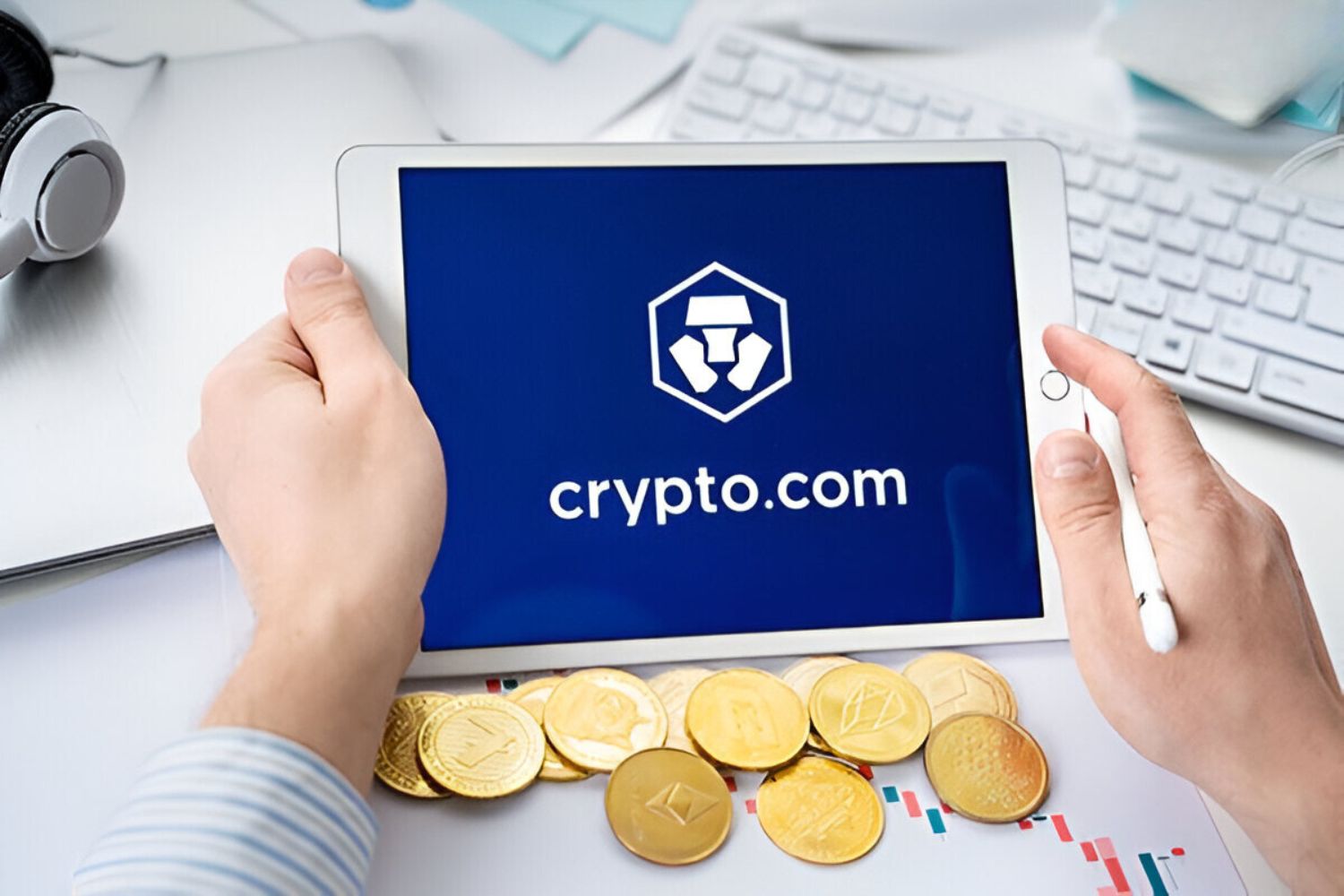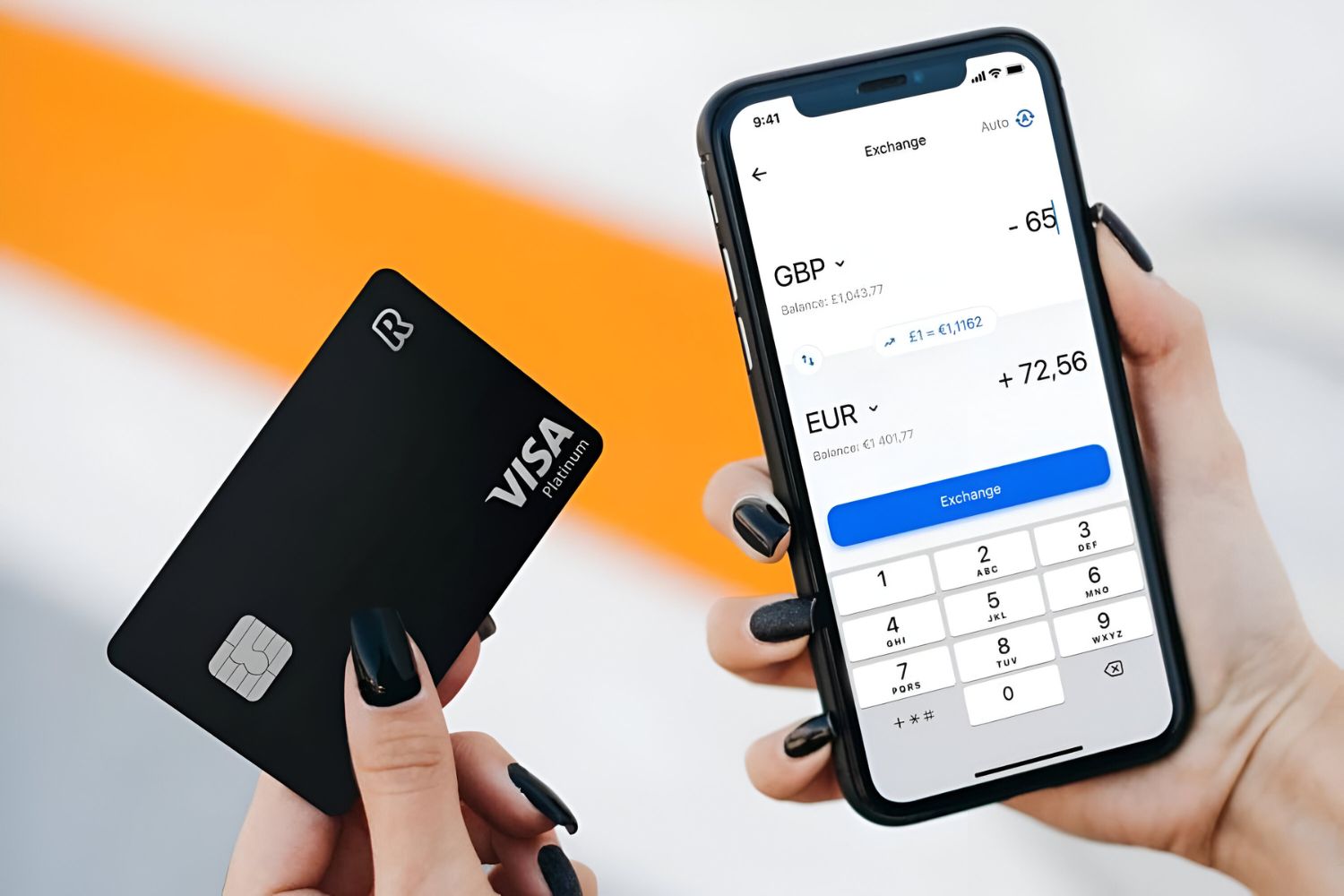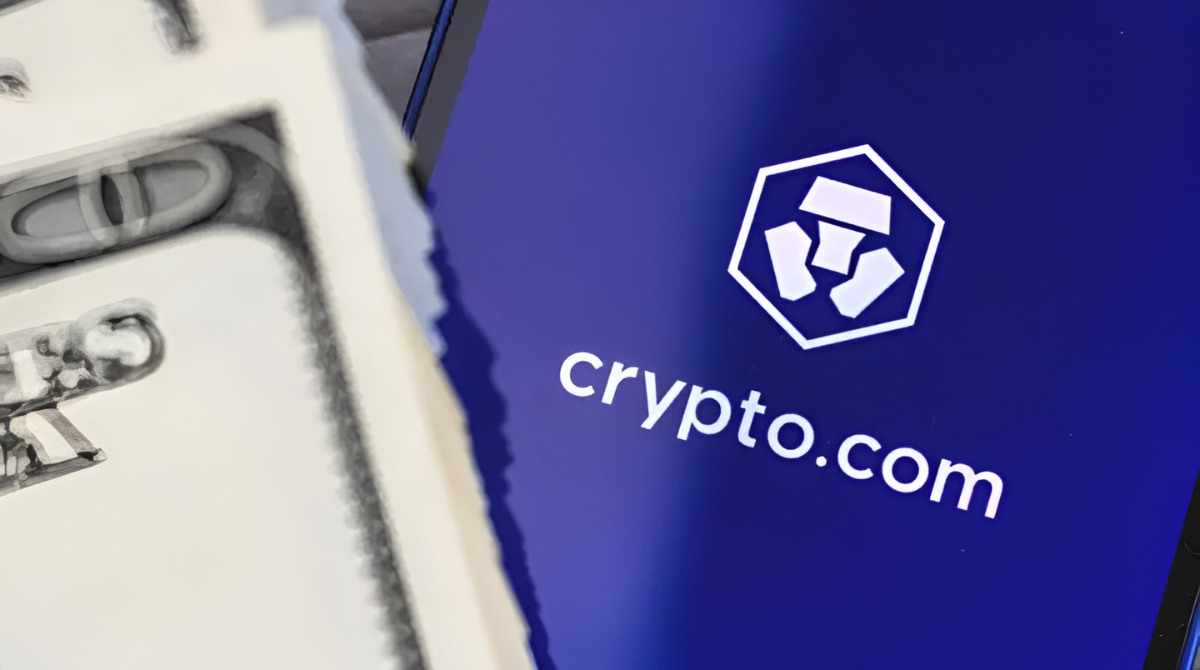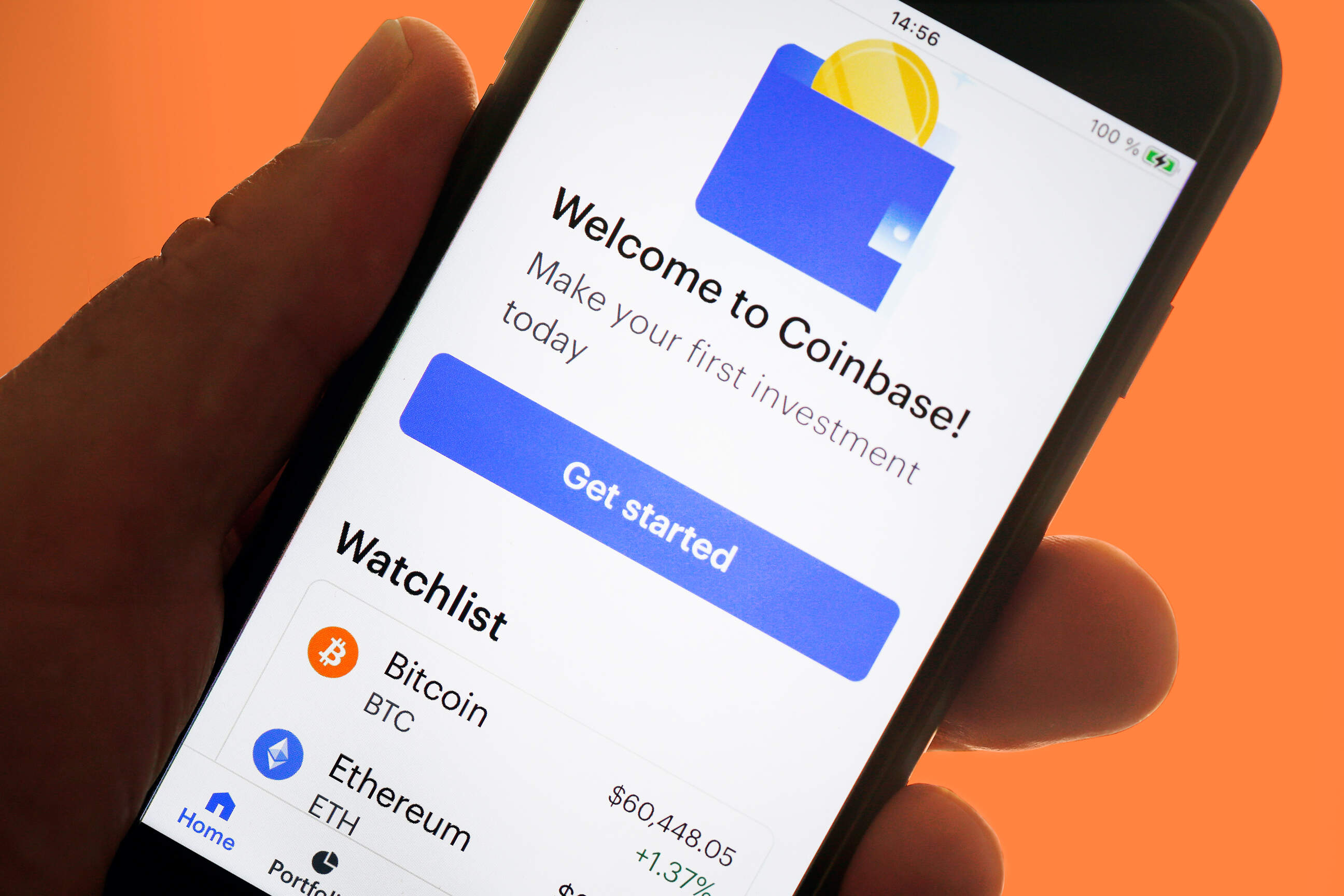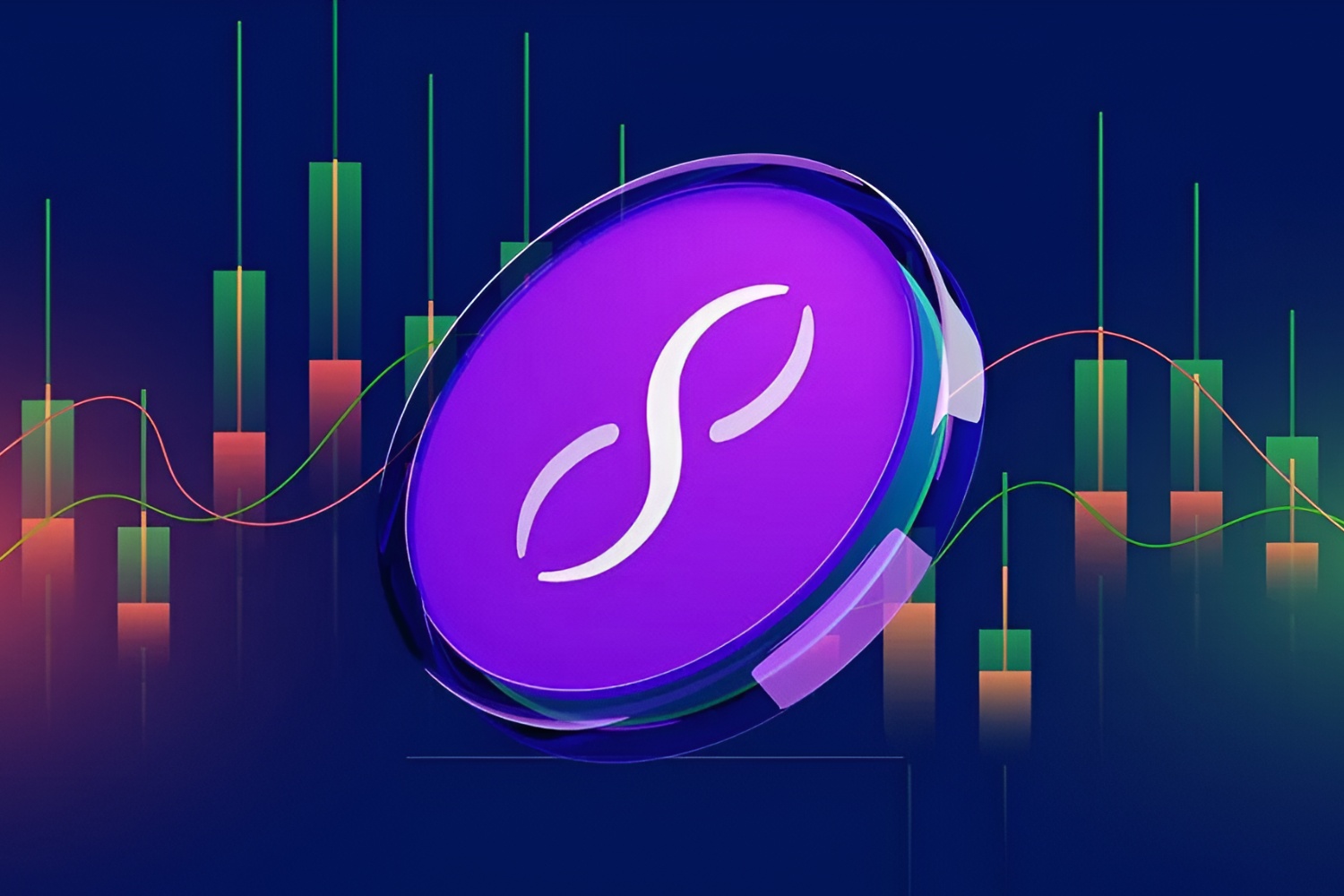Introduction
Welcome to the world of cryptocurrency transfers! As digital currencies have gained popularity, the need for secure and efficient methods of transferring crypto has become increasingly important. Whether you’re a seasoned investor or just getting started in the world of cryptocurrencies, understanding how to transfer your digital assets is crucial.
In this article, we’ll guide you through the process of transferring cryptocurrency, from understanding the basics to ensuring the security of your transactions. We’ll cover everything you need to know, from choosing the right wallet to avoiding common mistakes. So let’s dive in and learn how to navigate the world of crypto transfers!
Cryptocurrency transfers involve the movement of digital assets, such as Bitcoin, Ethereum, or Litecoin, between different wallets or accounts. This process allows you to send funds to another person or organization, making it an essential skill for anyone involved in the crypto market.
The first step in transferring cryptocurrency is to choose the right wallet. Wallets come in different forms, including hardware wallets, software wallets, and online wallets. Each type offers its own unique advantages and security features, so it’s important to understand them before making a choice.
Once you’ve selected a wallet, the next step is to transfer your cryptocurrency to that wallet. This involves obtaining the wallet’s receiving address and sending your funds from your current wallet or exchange account to the new wallet. It’s important to double-check the accuracy of the receiving address to avoid any accidental loss of funds.
Transferring cryptocurrency to another person or organization follows a similar process, but you’ll need their wallet’s receiving address instead. Before sending the funds, it’s crucial to ensure you have the correct address to prevent any irreversible mistakes.
Throughout the article, we’ll also discuss the concept of transfer fees and how they can vary depending on network congestion. It’s essential to consider these fees and remain informed about network conditions to minimize the overall cost of your transfers.
Furthermore, we’ll highlight the importance of taking security precautions when transferring cryptocurrency. Cryptocurrencies are highly valuable and attract the attention of cybercriminals, so understanding how to protect your assets and personal information is vital.
In the following sections, we’ll provide detailed instructions, tips, and best practices to help you navigate the world of cryptocurrency transfers with confidence. So let’s get started!
Section 1: Understanding Cryptocurrency Transfers
Before diving into the mechanics of cryptocurrency transfers, it’s essential to have a solid understanding of how these digital assets are transferred from one wallet to another. Cryptocurrency transfers involve the movement of funds recorded on a blockchain ledger, which is a decentralized and transparent digital database.
In the world of cryptocurrencies, transactions are validated and recorded on the blockchain through a process called mining. Miners use powerful computers to solve complex mathematical problems, ensuring the authenticity and integrity of each transaction. Once a transaction is validated, it becomes a permanent part of the blockchain history.
When you transfer cryptocurrency, you’re essentially creating a new transaction on the blockchain. This transaction consists of the sender’s wallet address, the recipient’s wallet address, and the amount being transferred. It’s important to note that the transaction is pseudonymous, meaning that the identities of the sender and recipient are not revealed, only their wallet addresses.
Each cryptocurrency has its own network and protocol for transferring funds. For example, Bitcoin operates on the Bitcoin network, Ethereum on the Ethereum network, and so on. These networks use different cryptographic algorithms and consensus mechanisms to ensure the security and efficiency of transactions.
One significant advantage of cryptocurrency transfers is that they bypass traditional financial intermediaries, such as banks or payment processors. This allows for faster and cheaper transactions, particularly for cross-border transfers. Additionally, cryptocurrencies offer greater financial inclusivity, as anyone with an internet connection can participate in the transfer process.
It’s important to note that the value of cryptocurrencies can be subject to extreme volatility. The price of a particular cryptocurrency can fluctuate significantly within a short period. This can impact the value of your transferred funds, so it’s advisable to consider the current market conditions before initiating a transfer.
Another factor to consider is the scalability and network congestion of the cryptocurrency you are transferring. Some cryptocurrencies, like Bitcoin, have limited transaction processing capacities, which can lead to delays and higher fees during periods of high network activity. Understanding the current state of the chosen cryptocurrency’s network can help you plan your transfers accordingly.
In this section, we have provided a brief overview of how cryptocurrency transfers function and some of the factors to consider. In the following sections, we’ll delve into the practicalities of choosing the right wallet, transferring crypto, and ensuring the security of your funds.
Section 2: Choosing the Right Wallet
When it comes to transferring cryptocurrency, choosing the right wallet is crucial. Wallets enable you to securely store, send, and receive your digital assets. There are several types of cryptocurrency wallets available, each with its own features and level of security.
1. Hardware Wallets: Hardware wallets are physical devices specifically designed to store cryptocurrency securely. They are offline wallets, meaning they are not connected to the internet when not in use. Hardware wallets provide an extra layer of security by keeping your private keys offline, making them less susceptible to hacking attempts. Examples of popular hardware wallets include Ledger and Trezor.
2. Software Wallets: Software wallets are applications that you install on your computer or mobile device. They offer convenient access to your cryptocurrency and are generally free to use. Software wallets can be further categorized into two types:
- Desktop Wallets: These wallets are installed on your computer and give you full control over your private keys. They offer a high level of security, but it’s essential to ensure your computer is free from malware and regularly updated with security patches.
- Mobile Wallets: Mobile wallets are apps designed for smartphones and tablets. They provide easy accessibility, allowing you to manage your funds on the go. However, you need to be cautious about device security and keep your mobile wallets updated.
3. Online Wallets: Online wallets, also known as web wallets or hosted wallets, are wallets provided by cryptocurrency exchanges or third-party platforms. These wallets allow you to access your funds through a web browser. While convenient to use, online wallets are considered less secure than hardware or software wallets. They are more prone to hacks and may expose your private keys to potential risks.
4. Paper Wallets: Paper wallets involve printing out your public and private keys onto a physical piece of paper. This allows you to store your cryptocurrency offline, providing an extra layer of security. However, it’s crucial to keep the paper wallet in a safe place and prevent unauthorized access or loss of the paper.
When choosing a wallet, consider factors such as security, convenience, and the type of cryptocurrency you hold. Hardware wallets are generally considered the most secure option, while software wallets offer a balance of convenience and security. Online wallets can be suitable for small amounts or for quick transactions, but it’s advisable to transfer your crypto to a more secure wallet for long-term storage.
Additionally, ensure that the wallet you choose supports the specific cryptocurrency you own. Not all wallets support every type of cryptocurrency, so it’s important to check compatibility before making a decision.
In this section, we discussed the different types of wallets available for storing and transferring cryptocurrency. In the next section, we’ll explore the process of transferring crypto from one wallet to another.
Section 3: Transferring Cryptocurrency to a Wallet
Once you have chosen the right wallet for your cryptocurrency, the next step is to transfer your digital assets to that wallet. Transferring cryptocurrency to a wallet involves sending funds from your current wallet or exchange account to the new wallet’s receiving address.
To initiate the transfer, follow these general steps:
- Obtain the Receiving Address: In your new wallet, locate the receiving address specific to the cryptocurrency you wish to transfer. This address is a long alphanumeric string that serves as the destination for your funds. It’s essential to double-check the accuracy of the receiving address to avoid any potential loss of funds.
- Access Your Current Wallet or Exchange Account: If you have your cryptocurrency stored in a software or online wallet, log in to your account. Alternatively, access your exchange account if that’s where your funds are currently held.
- Initiate the Transfer: Look for the option to send or transfer funds within the wallet or exchange platform. Enter the receiving address obtained in the previous step and specify the amount you wish to transfer. Review the transaction details, including any network fees that may apply.
- Confirm and Complete the Transfer: Carefully review the transaction details, including the receiving address and the amount to be transferred. Once you are certain everything is correct, confirm the transfer. Depending on the cryptocurrency and network congestion, the transfer may take a few minutes to several hours to be processed.
During the transfer process, it’s important to be mindful of transaction fees, especially if you are transferring a significant amount of cryptocurrency. Networks may charge a fee to process your transaction and prioritize it within the network. These fees can vary depending on the cryptocurrency and network congestion, so it’s advisable to stay informed about the current fee structure.
It’s also essential to note that some wallets or exchanges may require additional security measures, such as two-factor authentication (2FA), to authorize the transfer. These extra steps add an additional layer of protection to prevent unauthorized access to your funds.
Once the transfer is successfully completed, you should see the newly transferred funds in your new wallet’s balance. Take the time to verify that the balance reflects the correct amount you transferred to ensure the accuracy and integrity of the transaction.
Remember to keep your wallet’s private keys secure and backed up in case you need to recover your funds or access them from a different device. Losing your private keys can result in permanent loss of access to your cryptocurrency.
In this section, we discussed the process of transferring cryptocurrency to a wallet, including obtaining the receiving address and initiating the transfer. In the next section, we’ll explore the steps involved in sending cryptocurrency to another person.
Section 4: Sending Cryptocurrency to Another Person
Sending cryptocurrency to another person involves a similar process to transferring it to a wallet. However, instead of sending funds to your own wallet, you’ll be sending them to someone else’s wallet address.
To send cryptocurrency to another person, follow these steps:
- Obtain the Recipient’s Wallet Address: The recipient should provide you with their wallet’s receiving address. This address is a unique alphanumeric string that serves as the destination for the funds you’re sending. It’s crucial to verify the accuracy of the address to ensure the funds are sent to the intended recipient.
- Access Your Wallet: Log in to your wallet or exchange account from which you’ll be sending the cryptocurrency. Ensure you have a sufficient balance to cover the amount you wish to send, as well as any applicable network fees.
- Initiate the Send Transaction: Look for the option to send or send funds within your wallet or exchange platform. Enter the recipient’s wallet address and specify the amount you want to send. Double-check the transaction details, including the recipient’s address, to avoid any irreversible mistakes.
- Confirm and Complete the Transaction: Review the transaction summary, including the recipient’s address and the amount being sent. Once you are certain everything is accurate, confirm the transaction. Similar to transferring to a wallet, the transaction may take some time to be processed, depending on the cryptocurrency and network congestion.
It’s important to note that different cryptocurrencies may have different confirmation times and fees associated with their transactions. For some cryptocurrencies, the confirmation process may only take a few minutes, while others may require longer confirmation times.
When sending cryptocurrency to someone else, it’s considerate to inform them about the transaction and provide them with any additional information they may need, such as transaction IDs or confirmation links. This helps to ensure transparency and avoid any confusion between you and the recipient.
Remember to exercise caution when sending funds to others. Cryptocurrency transactions are typically irreversible, meaning that once the funds are sent, they cannot be effortlessly recovered. Double-check the recipient’s wallet address, especially when sending larger amounts, to prevent any accidental loss of funds.
Additionally, be aware of any potential fees associated with the transaction. Some cryptocurrencies may charge transaction fees based on network congestion or transaction size. It’s important to factor these fees into your decision and be aware of the total amount that will be deducted from your balance.
In this section, we explored the process of sending cryptocurrency to another person, including obtaining the recipient’s wallet address and initiating the transaction. In the next section, we’ll discuss transfer fees and how network congestion can affect the overall process.
Section 5: Transfer Fees and Network Congestion
When transferring cryptocurrency, it’s important to be aware of transfer fees and how network congestion can impact the overall process. These factors can affect the speed and cost of your transactions.
Transfer fees, also known as transaction fees, are charges imposed by the cryptocurrency network to process and validate transactions. These fees can vary depending on the cryptocurrency and the current network conditions.
Network congestion refers to the level of activity and demand on the blockchain network at any given time. When there is a high volume of transactions being processed, the network may become congested, leading to delays in confirmations and higher fees.
Factors that can influence transfer fees and network congestion include:
- Network Capacity: Different cryptocurrencies have varying capacities for processing transactions. Cryptocurrencies like Bitcoin may have a limited number of transactions they can handle per block, leading to higher competition for transaction inclusion and potentially higher fees.
- Transaction Priority: Miners prioritize transactions based on the fees offered. If you want your transaction to be processed quickly, it’s advisable to include a higher fee to incentivize miners to include it in the next block.
- Current Demand: The overall demand for cryptocurrency transactions can fluctuate, leading to periods of high network congestion. Increased demand can result from various factors, such as market activity, news events, or network upgrades.
To mitigate the impact of transfer fees and network congestion, consider the following tips:
- Plan Ahead: If possible, plan your transfers during periods of lower network congestion to minimize fees and potential delays. Monitoring the network conditions can provide insight into the optimal time for initiating a transfer.
- Research Current Fee Structure: Different wallets and exchanges may have varying fee structures. Research the current fee rates for the cryptocurrency you’re transferring to ensure you are aware of the costs involved.
- Be Mindful of Transaction Size: Larger transactions typically require more data and processing power, resulting in higher fees. Consider the transaction size when transferring cryptocurrency and be aware of its potential impact on fees.
- Optimize Fee Settings: Some wallets allow you to customize the fee settings for your transactions. You can choose to prioritize speed or cost-effectiveness based on your preferences and the urgency of the transfer.
It’s important to note that transfer fees are subject to change, as they depend on network conditions and various factors influencing cryptocurrency markets. Staying informed and keeping up to date with the latest fee structures can help you make informed decisions during transfers.
In summary, transfer fees and network congestion can impact the speed and cost of your cryptocurrency transfers. By understanding the factors influencing these fees and being mindful of network conditions, you can optimize your transfers to achieve a balance between speed and cost-effectiveness.
Section 6: Double-Checking the Accuracy of the Transfer
Double-checking the accuracy of your cryptocurrency transfer is crucial to ensure that your funds are sent to the intended recipient and no errors occur during the process. By taking a few extra steps to verify the transaction details, you can minimize the risk of mistakes and ensure the integrity of your transfers.
Here are some important steps to double-check the accuracy of your transfer:
- Review the Receiving Address: Before initiating the transfer, carefully review the receiving address provided by the recipient or your new wallet. Compare the address character by character to ensure it matches exactly. Even a minor typographical error can result in the funds being sent to the wrong destination, potentially leading to irreversible loss.
- Copy and Paste the Address: To avoid manual entry errors, consider copying and pasting the receiving address directly from the recipient’s provided information or your new wallet. This reduces the risk of mistyping the address and ensures accuracy.
- Verify the Amount: Double-check the amount of cryptocurrency you wish to transfer. Ensure that it accurately reflects the intended value and matches your expectations. Transferring an incorrect amount can lead to unexpected consequences, especially when dealing with significant sums.
- Consider a Test Transfer: If you are unsure about the process or dealing with a substantial amount of cryptocurrency, consider making a small test transfer first. This allows you to verify that the transaction is executed smoothly and arrive in the intended wallet before proceeding with a larger transfer.
- Monitor the Transaction: After initiating the transfer, monitor the transaction status using blockchain explorers or the wallet/exchange interface. This allows you to track the progress of the transaction and ensure it is successfully confirmed and recorded on the blockchain.
- Keep Records and Confirmation: Keep a record of the transaction details, such as the transaction ID or hash, as well as any confirmation or receipt provided by the wallet or exchange. This documentation serves as proof of the transaction and can be useful for future reference or dispute resolution.
- Stay Vigilant for Phishing Attempts: Be cautious of phishing attempts or fraudulent activities that may mimic wallet addresses or communication channels. Verify the legitimacy of any communication before sharing sensitive information or confirming a transfer.
By following these steps and taking the time to double-check the accuracy of your transfer, you can minimize the risk of errors and ensure a smooth and secure transaction.
In the next section, we’ll delve into the importance of security considerations when transferring cryptocurrency to protect your funds from potential threats.
Section 7: Security Considerations
When it comes to transferring cryptocurrency, prioritizing security is of paramount importance. Cryptocurrencies are valuable digital assets, and ensuring their safety during transfers is crucial to protect against potential threats. Here are some essential security considerations to keep in mind:
- Secure Wallet Selection: Choose a reputable and secure wallet that offers robust security features. Opt for wallets that utilize encryption, multi-factor authentication, and regularly updated software to provide enhanced protection for your funds.
- Keep Your Software Updated: Ensure that your wallet software and any associated plugins or applications are up to date. Regularly check for updates, as they often include important security patches and bug fixes that protect against potential vulnerabilities.
- Backup Your Wallet: Regularly back up your wallet’s private keys or seed phrase in a secure offline location. This backup ensures that in the event of device loss or failure, you can recover your funds and restore access to your wallet.
- Enable Two-Factor Authentication (2FA): Two-factor authentication adds an extra layer of security by requiring an additional verification step, such as a unique code sent to your mobile device or generated by an authenticator app, to access your wallet or authorize transactions.
- Use a Secure Internet Connection: When transferring cryptocurrency, avoid using public Wi-Fi networks or unsecured connections. Instead, opt for a secure and encrypted internet connection to minimize the risk of data interception or unauthorized access to your transactions.
- Double-Check Website URLs: Be vigilant for phishing attempts that try to deceive you into entering your wallet credentials or personal information on fraudulent websites. Always double-check that the website’s URL is correct and secure, and avoid clicking on suspicious links.
- Monitor for Suspicious Activity: Regularly review your wallet and transaction history for any unauthorized or suspicious activity. If you notice any unexpected transactions or discrepancies, take immediate action to investigate and secure your funds.
- Protect Your Private Keys: Keep your private keys confidential and never share them with anyone. Avoid storing them in online locations or sharing them electronically, as this increases the risk of unauthorized access to your funds.
- Verify Transaction Details: Before confirming any transactions, carefully review the transaction details, including the recipient’s address and the amount being sent. Double-checking these details can help prevent accidental loss of funds due to human error.
By implementing these security considerations, you can significantly enhance the safety of your cryptocurrency transfers and reduce the risk of falling victim to fraud or hacking attempts.
In the next section, we’ll discuss some common mistakes to avoid during cryptocurrency transfers to ensure a seamless and successful process.
Section 8: Common Mistakes to Avoid
Transferring cryptocurrency can be a straightforward process, but it’s important to be aware of common mistakes that can occur and take proactive steps to avoid them. By avoiding these pitfalls, you can ensure a smooth and successful transfer of your digital assets. Here are some common mistakes to watch out for:
- Entering Incorrect Addresses: One of the most critical mistakes to avoid is entering an incorrect wallet address when initiating a transfer. Always double-check the recipient’s address to ensure accuracy and prevent sending funds to the wrong destination.
- Not Verifying Transaction Details: Failing to review the transaction details, such as the recipient’s wallet address and the amount being sent, is another common mistake. Take the time to carefully verify all the information before confirming the transfer.
- Not Considering Network Fees: Neglecting to consider the fees associated with cryptocurrency transfers can lead to unexpected costs. Always be aware of the current fee structure and factor it into your decision-making process.
- Ignoring Network Congestion: Ignoring network congestion can result in delays in transaction confirmations. Keep an eye on the network’s status and adjust your expectations and timing accordingly, especially during periods of high activity.
- Being Reckless with Private Keys: Mishandling or losing your private keys can lead to permanent loss of access to your digital assets. Keep your private keys secure and backed up in a safe and reliable offline location.
- Not Using Secure Wallets: Using unsecure or unreliable wallets can compromise the safety of your funds. Choose reputable wallets that offer robust security features and employ best practices for safeguarding your cryptocurrency.
- Ignoring Security Precautions: Neglecting security precautions, such as enabling two-factor authentication or using secure internet connections, increases the risk of unauthorized access to your wallet and funds. Always prioritize security in every aspect of your cryptocurrency transfers.
- Ignoring Market Volatility: Cryptocurrency prices can be highly volatile. Failing to consider market conditions and fluctuations before initiating a transfer can result in unexpected gains or losses in the value of your transferred funds.
- Not Keeping Records: Failing to keep records of your transactions, including confirmation numbers or receipts, can make it challenging to resolve any issues that may occur in the future. Maintain a record of your transfers for future reference and accountability.
By avoiding these common mistakes and adopting a cautious and proactive approach, you can significantly reduce the risk of errors, funds loss, and potential complications during your cryptocurrency transfers.
In the next section, we’ll address frequently asked questions (FAQs) to provide further clarity and guidance on various aspects of cryptocurrency transfers.
Section 9: Frequently Asked Questions (FAQs)
Here are some commonly asked questions regarding cryptocurrency transfers:
- Q: How long does a cryptocurrency transfer take?
A: The time it takes for a cryptocurrency transfer to complete depends on various factors, including the specific cryptocurrency, network congestion, and the transaction’s fee. Some transfers can be processed within minutes, while others may take longer to confirm, especially during periods of high network activity. - Q: Are cryptocurrency transfers reversible?
A: In general, cryptocurrency transfers are not reversible. Once a transaction is confirmed and recorded on the blockchain, it becomes exceedingly difficult to undo. It’s crucial to ensure the accuracy of the transaction details before confirming and initiating the transfer. - Q: Are there minimum or maximum limits for cryptocurrency transfers?
A: Cryptocurrencies typically do not impose minimum or maximum limits for transfers. However, some exchanges or wallets may have their own restrictions or thresholds for withdrawals or deposits. It’s advisable to check the specific platform’s terms and conditions for any limits that may apply. - Q: Can I transfer one cryptocurrency to another?
A: Some wallets and exchanges offer the ability to exchange or convert one cryptocurrency into another within the platform. Alternatively, you can use specialized cryptocurrency exchanges to convert one cryptocurrency to another before transferring it to a different wallet. - Q: Can I transfer cryptocurrency without paying fees?
A: While it is possible to send cryptocurrency without paying fees, it may significantly delay the transaction or result in it being stuck in the mempool (unconfirmed transactions). Cryptocurrency networks rely on transaction fees to prioritize and process transactions swiftly. - Q: How can I track the status of my cryptocurrency transfer?
A: You can track the status of your cryptocurrency transfer using blockchain explorers or by accessing the transaction history on your wallet or exchange platform. By searching for the transaction ID or wallet address, you can view the details and monitor its progress. - Q: What should I do if I suspect an issue with my cryptocurrency transfer?
A: If you encounter any issues or suspect an error with your cryptocurrency transfer, it is best to contact the support team of your wallet or exchange platform for assistance. Provide them with the necessary transaction details and describe the problem you’re facing for prompt resolution. - Q: Do I need to pay taxes on cryptocurrency transfers?
A: Tax regulations regarding cryptocurrency vary depending on the jurisdiction. It’s important to consult with a tax professional or research your local tax laws to determine if cryptocurrency transfers are subject to taxation and how to comply with reporting requirements. - Q: Can I cancel or undo a cryptocurrency transfer?
A: Once a cryptocurrency transfer is confirmed and recorded on the blockchain, it cannot be canceled or undone. This is why it’s crucial to double-check all transaction details before initiating the transfer to avoid irreversible mistakes.
These are general answers to frequently asked questions about cryptocurrency transfers. Keep in mind that the specific requirements and processes may vary based on the cryptocurrency and the wallet or exchange platform you are using.
Conclusion
In conclusion, understanding how to transfer cryptocurrency is essential for anyone involved in the world of digital assets. By following the right steps and considering important factors, you can ensure safe and successful transfers of your valuable funds.
We started by understanding the basics of cryptocurrency transfers, including the concept of blockchain and how transactions are validated. We then discussed the importance of choosing the right wallet and explored various types, including hardware wallets, software wallets, online wallets, and paper wallets.
We delved into the practical process of transferring cryptocurrency to a wallet, emphasizing the need for accuracy in entering the receiving address and verifying transaction details. We also covered the steps involved in sending cryptocurrency to another person, highlighting the importance of double-checking the recipient’s wallet address and considering transaction fees.
Transfer fees and network congestion were discussed, emphasizing the impact they can have on the cost and speed of cryptocurrency transfers. We provided tips on how to plan transfers to minimize fees and optimize the process.
Security considerations were highlighted as a vital aspect of cryptocurrency transfers. We discussed the importance of secure wallet selection, keeping software updated, enabling two-factor authentication, using secure internet connections, and protecting private keys.
To ensure smooth transfers, we addressed common mistakes that should be avoided, such as entering incorrect addresses, neglecting to verify transaction details, and ignoring network fees. We also provided answers to frequently asked questions, covering various aspects of cryptocurrency transfers.
By adhering to these guidelines, you can navigate the world of cryptocurrency transfers with confidence and minimize the risks associated with transactions. Remember, each transfer should be approached with caution, double-checking all details to ensure accuracy and security.
As the cryptocurrency ecosystem evolves and new technologies emerge, staying informed and keeping up with best practices are essential. Regularly educate yourself about the latest developments and security measures to safeguard your cryptocurrency assets.
With these insights and knowledge, you are now equipped to initiate secure and successful cryptocurrency transfers. Happy transferring!










